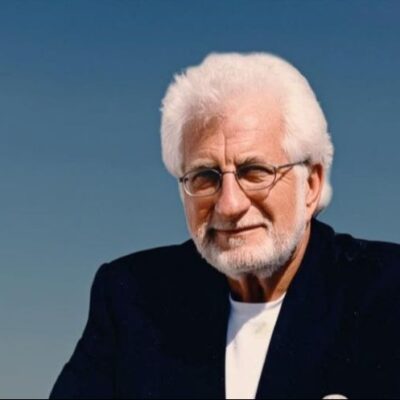Opinion
New media
New beit midrash: Digital and beyond
In Short
The beit midrash and the classroom will always be the principal sites of transformative Jewish study; it will just look a lot different tomorrow than before.
For decades, even centuries, the beit midrash, and by extension the classroom, has been the central place where people gather to study together. Because of this, they have served as the most important centers for the transmission of Jewish ideas. In this digital age, where ideas proliferate on numerous platforms and in a variety of formats, Jewish learning must also reach beyond the beit midrash.
There are good reasons that the beit midrash has been central for so long. It’s pedagogically unmatched for intensive educational experiences, group conversations, forming relationships with peers and teachers and for cohort-based learning. Because the beit midrash is so crucial, Jewish education has long revolved around it: teachers spend years honing their classroom skills, intensive educational programs are built around and online resources for creating source sheets are blossoming.

Bernhard Lang
But the modern beit midrash lives in a constellation of other modes of learning, and these other modes are becoming increasingly important, especially for young people.
For anyone working with millennials or Gen Z, this has been clear for a while, and during the pandemic it became clearer still. For all the importance of a teacher’s personal dynamism and spirited discussion in the beit midrash, time restraints and personal preference mean that many of the ideas people consume today are imbibed asynchronously from the infinite materials available online — through text, podcasts and videos. The ideas encountered in these formats can be no less life-changing than the ones gained in the beit midrash. Teachers, too, are increasingly turning to digital media as both an in-class resource and an out-of-class supplement.
For Jewish organizations that care about transmitting Jewish ideas, this transformation of the ideas marketplace presents a problem: with limited resources, how do you offer ideas across all the formats in which people want to receive them? More specifically — how do Jewish educational institutions that have spent years or decades optimizing for the beit midrash, move to this “beit midrash-plus” model when the skills to utilize digital media aren’t readily at hand? If digital media is being used to attract new audiences, how do you leverage these tools to share Jewish ideas?
An all-of-the-above pedagogical strategy
Over the last two and a half years, the Shalom Hartman Institute has been experimenting with digital media as a means of strengthening our capacity to disseminate Jewish ideas. We hope that our work and the lessons that we have learned will be useful for the field around us. It has taken a lot of time, growing pains and money. The work of training — our faculty to work in new modes, our organization to adapt to different timelines or even our audiences to expect the same wine in different vessels — is really challenging. The good news is that the “beit midrash-plus” strategy can work, such that digital and analog educational experiences can reinforce each other. We have also been able to reach new audiences while deepening relationships with existing learners.
Here’s what we’ve learned so far:
- Podcasts are for deepening existing relationships and forming new ones
In March 2020, exactly as the world was shutting down, Hartman launched “Identity/Crisis,” a weekly conversational podcast about ideas relevant to current events in the Jewish world hosted by Yehuda Kurtzer. A month later, we launched “For Heaven’s Sake“, a biweekly roundtable podcast hosted by Donniel Hartman and Yossi Klein Halevi in Jerusalem and Elana Stein Hain in our New York office. By the end of the year, we had added a Hebrew-language channel that has now aired three limited series featuring our Israeli faculty on contemporary Jewish thought and Israeli Judaism.
These shows, which receive thousands of listeners each month, have had a major impact on the way that our ideas get into the world. Rabbis and other educators who had previously interacted with Hartman only during summers in Israel could now hear from their teachers on a regular basis. Some schools and synagogues have integrated the podcasts into their batei midrash, classrooms or discussion groups. Perhaps most importantly, the podcasts have changed what Jewish leaders can address with their constituencies and the speed with which they can lead the conversation: For example, when Russia invaded Ukraine, we were able to release episodes about Ukraine’s Jewish community in a matter of days, and when Israel recently elected a new government, we were able to post a reaction within 24 hours. The ability to connect big ideas to developing stories is one of our new and most important strengths. The podcasts serve as the connective tissue between big, abstract ideas and the real world. We are now growing based on this competency, and we are preparing to launch additional scripted and conversational series this year.
- Content and Format Evolve Together
As we pursued the podcasting strategy for the quick delivery of news-connected ideas, we simultaneously began working on a very different kind of delivery mechanism. We launched Sources: A Journal of Jewish Ideas, an English-language long form journal, in Spring 2021 as a way of conveying important but more complex analysis and arguments. If our podcasts allow us to respond to immediate situations more quickly, the material in Sources allows writers the opportunity to develop and polish their work, often relying on close readings of Jewish texts and other sources. We have already seen these pieces sparking new conversations and changing old ones. As new media have pushed all of us to distill our ideas to fit in short character counts or into diminishing attention spans, we have seen a growing demand for slower, richer, deeper packages of content for readers and learners willing to invest the time. It is not a coincidence that Sources is one of several new Jewish journals that have sprouted up alongside the digital revolution; powerful ideas need a variety of distribution mechanisms that cater to different learners, and that speak to one another.
We’ve also learned about the ways that a single organization can experiment with new kinds of packaging and methods to shape the public conversation. Our most recent podcast is a perfect example of this. “Heretic in the House” is a four-part scripted series about the relationship between Orthodox communities and the people who leave them. Launched in November 2022, the series explores issues of Jewish identity and belonging, but does so in exactly the opposite way that these issues would be covered in a beit midrash. Whereas a beit midrash discussion might focus on big ideas and use case studies as a support, “Heretic” puts the case study in the foreground, using the emotive power of Naomi Seidman’s scripts and interviews to get listeners invested in the stakes of the conversation. Podcasts, which are all about the human voice, have long excelled at emotional content, and Heretic builds on this exquisitely.
- Jewish education needs better video content
The last piece of the puzzle in rethinking the key components for the new Jewish beit midrash is around video content. Jewish organizations have struggled with producing video content because it is costly and time-consuming, and because the path for content from beit midrash to YouTube is less clear than the one from classroom to podcast. It’s relatively easy to abridge a 90-minute class into a 45-minute podcast; it is significantly harder to distill it into an 8-minute video.
But video, even above podcasts, is simply a necessity for reaching young audiences. YouTube is by far the most important media site for teens and remains extremely popular for people in their 20s and beyond, as well. We are currently running new experiments: At Hartman in Israel, we have already begun pioneering shortform content based on scripts from our faculty in Hebrew, and this coming year we will be releasing new English content as well as we attempt to distill Hartman Torah into more accessible video forms. In the coming months, we will release new videos.
Each of these video projects is pushing us beyond the successful iEngage video series we developed in the past. These longer videos that tackle complex content were designed for already interested audiences who are being guided by an educator, so there was less pressure on them to present their ideas as standalone pieces of content, and less of a need to reinforce those ideas with dazzling visuals. While we are proud that iEngage has been an essential tool for rabbis and educators to use in their classrooms in teaching about Israel, we are eager to try our hand using video in a new way.
This is just the story of one organization and our shift into the digital age, but perhaps our experiences — which have been powered for us by courageous risk-capital from Jewish philanthropists — could be useful for this larger field as we navigate this changing world. As each of these digital products is produced and released, we learn a little more, and the strategy for what an all-of-the-above approach to transmitting Jewish ideas gets clearer. The beit midrash and the classroom will always be the principal sites of transformative Jewish study; it will just look a lot different tomorrow than before. Let’s build the new beit midrash together.
Maital Friedman is vice president of communications and creative and David Zvi Kalman is scholar in residence and director of New Media at Shalom Hartman Institute of North America.














